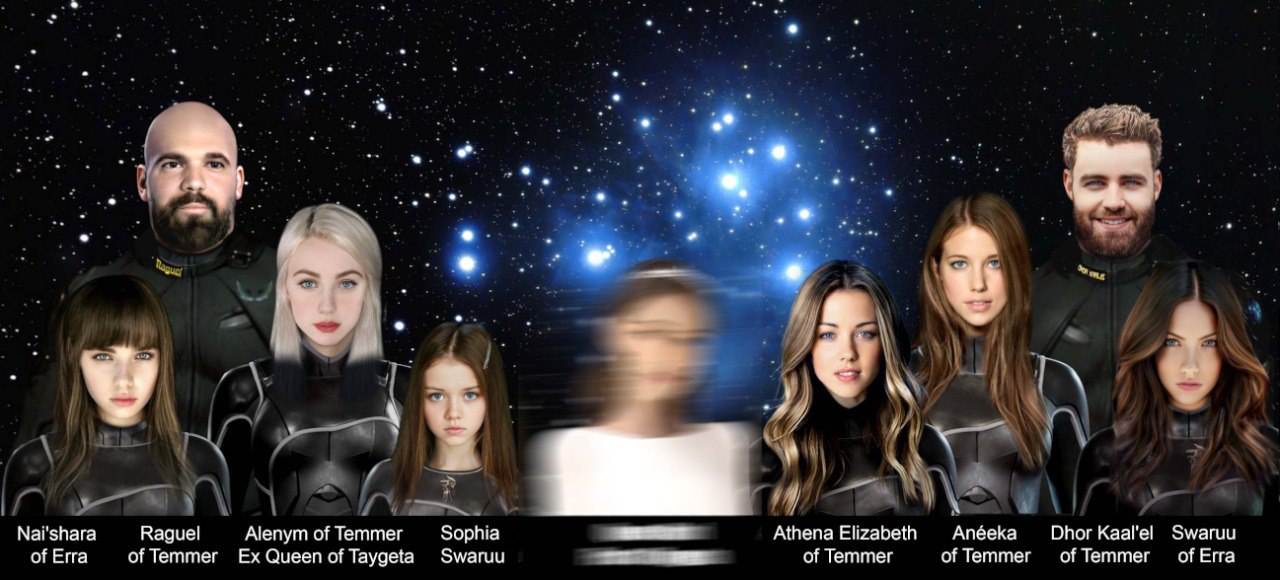Feline Culture - Urmah **NO VIDEO**
THESE TRANSCRIPTS CAN BE ACCESSED TO MAKE TRANSLATIONS INTO ANY LANGUAGE (in text or video) ONLY WHEN THEY ARE ACCOMPANIED WITH THE OFFICIAL CREDIT TO THIS WEB PAGE AND OUR YOUTUBE CHANNELS WHERE THEY WERE FOUND.
Under no circumstances is it allowed to publish the information presented in our channels and on this page for commercial purposes (sale of books and promotional materials).
Author
ATTACHE, englishPublished
January 20, 2021Feline Culture - Urmah **NO VIDEO**
ORIGIN AND BIOLOGY
Anéeka: Avyon is the main planet of the Urmah. Here on Earth, it has been given the name Avalon. But that is only human interpretation. The Urmah race is one of the most prolific in this quadrant, they have colonized planets literally everywhere, even in the Pleiades. They are the dominant race of this quadrant.
For example, the Hiaden race of Merope are Urmah, but with another name. The Hiadenes are more Urmah. They are independent, but they are never fully independent. They are like Canada or Australia would be for England, more of the same. Supposedly independent, but still coordinating about things. With their headquarters in the star Vega.
The Vega star system is four planets, two of them inhabited. Avyon is the first planet inhabited by Urmah and from where the domestic cat that already spread throughout the galactic zone comes from. And the second planet is Lyra, Lyrians, where it is said that we all came from, all humanomorph races. The Vega system is located in the constellation Lyra at a distance of 25 light years.
Avyon is a mostly forest and steppe or M-Class type planet, only slightly larger than Earth. Lyra is more like Earth with 50% ocean and 50% land. It is another clone of Earth, but with a milder atmosphere. In fact, both Avyon and Lyra are more habitable than Earth. They are of the so-called super habitable planets, where life is easier than on Earth, and I am talking about the planet, the climate, the atmosphere and the gravity. Other super habitable planets are Venus, Erra, Temmer and Alfrata, among others. And they say that Venus is a sulfuric acid hell.
The fauna on Avalon is similar to that of Earth. They do have other animals that are unknown on Earth, but they share many species. The climate, as I understand it, is more like Erra or Temmer. Two marked seasons, but they don't have strong winter like Erra because it is the first planet in the system since it is very close to the Vega sun.
The Urmah are like lions or tigers. However, as on Earth, there are subspecies. That is, they are not all lions, but they are all like big cats. All mixed, and they do create offspring among themselves. Not all of them have stripes like a tiger, but let's say most of them do have stripes all over their bodies. It's just that as they dress you don't notice them other than on their face, arms or hands. I see stripes more commonly on brindles, hence the yellow lion, but even on those I see stripes sometimes. The vintage cartoon "Thundercats" are clearly allusive to the Urmah.
Their estimated lifespan, since time is not linear in 5D, is not well calculated, but officially it is about 10 times longer than a human on Earth, i.e., about 950 years or 100 times the average life expectancy of a domestic cat on Earth.
They take quite a while to reach physical maturity, comparatively, more or less, like Lyrians in general. Still, they are capable of flooding a place with kittens of various ages quickly.
Also, like us, they remember their past lives influencing mental maturity at an early age, but always according to the individual. All adults seem to exceed 2.5m in height. It is usual to find them of 3m, like Ruhr, and they weigh about 300kg, being the average weight of an Urmah from 270 to 280kg except for the biggest ones.
They are bipedal and quadrupedal as it suits them, this fact few know. They have a slightly different spine and hips, which allows them to walk and spend a lot of time upright, although they are slower this way. But for speed or strength they do get down on all fours. Noting that a domestic cat can develop hernias if it is forced for a long time in an upright position. But Urmahs don't have that problem. I have never heard of it as a result of walking upright.
They have a long, inserted tail like a lion or tiger. This picture is not too far from reality, but take away the anthropomorphic structure as their chests are clearly cat-like in a V-shape.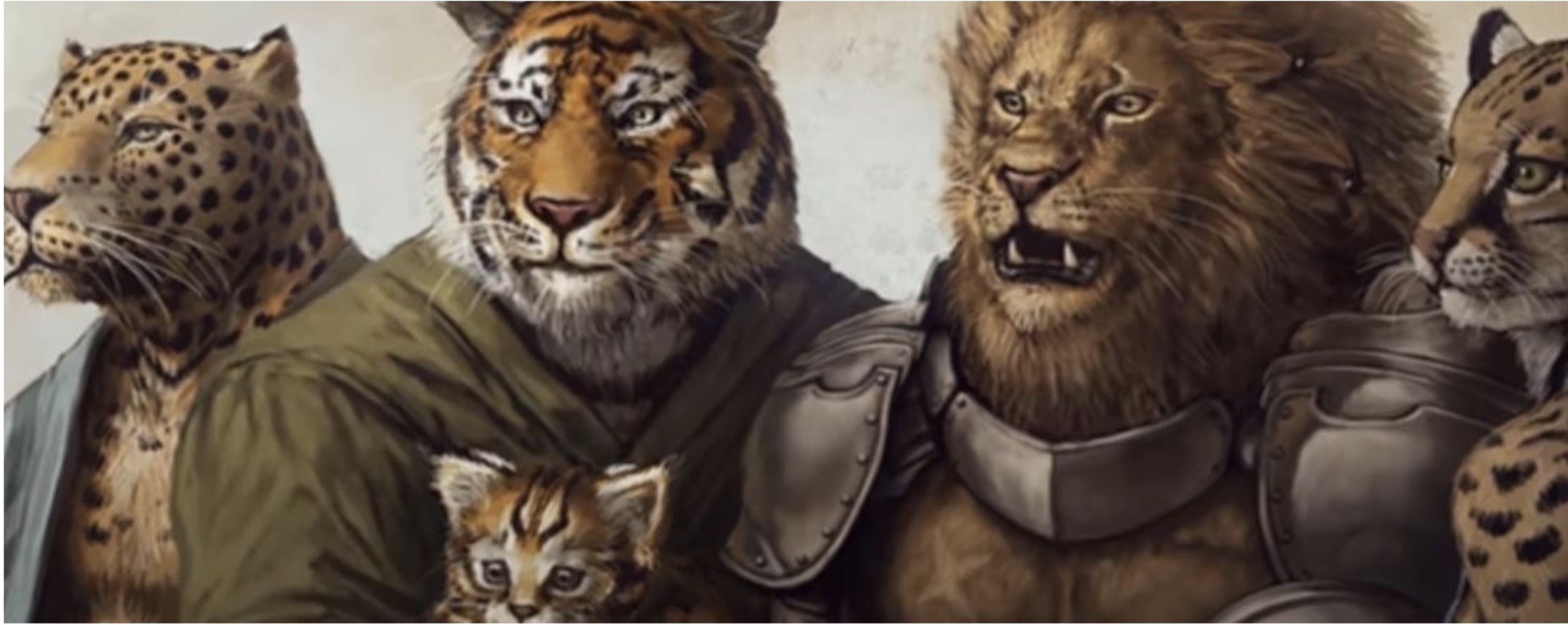
As I have told you before, they differ very little from a standing lion or tiger as you would see them on Earth. On Earth, they sometimes paint the Urmah as having human bodies, but with a lion's head, and that doesn't really make sense. They are cats, only evolved to walk on two legs, but they do still walk and run on four legs as well. Their offspring are corrected to walk upright because otherwise they would only stay on all fours because it is the most comfortable.
But staying that way does not allow them to carry things, to evolve further, to interact with other upright species. The fact that a species is upright is determinant for its cultural evolution because if the baby or kitten can learn to walk upright, then it can explore both worlds.
Already when they walk on two legs with mastery, once they are older, for sport or whatever, they will alternate two or four legs according to their needs. To fight, they do a combination of what is convenient between both worlds. A lot of sword or axe fighting in their culture, but, logically, they use their claws and teeth as well.
Their hands tend to be more dexterous than a normal cat. With the prehensile finger or thumb more in hand position and using their nails to grasp things. They have a lot of precision in manipulating objects. They are not clumsy because they are not paws exactly, they are feline hands, unique hands, but just like a house cat they cannot make a fist without pulling out their nails, that is why they use it as a gripping method. Also, they wear gloves for other functions, as required.
You can notice the differences between males and females as they are smaller and have softer, more compact faces, and they do not have a mane, which is distinctive of a male Urmah.
Females have breasts like cats. Most commonly, females give birth to two or three kittens, although sometimes they have only one, but there are litters of up to eight, according to what I have been told. I know that the female cats pass the kittens among themselves, that they help each other with the breeding.
The Urmah species is very prolific in this galaxy. They are everywhere. It is a very numerous race with many independent colonies, but linked to their origin.
They are omnivorous, based mainly on meat, but they produce it, they do not kill, they used to, but they have evolved a lot. The Alpha Draco also no longer kill. They grow tissue for food in devices like medical pods. So they were never part of an animal. They also consume vegetables, although I've never seen them eat citrus.
The thing is, they just can't be vegan like us Taygetans. It's another species. As for beverages, apart from drinking water, they also have a long series of soft drinks. Like us, they don't drink alcohol. In our case, the most we get, let's say, is certain ferments like pineapple ferment, but it is very little alcohol, and it is very natural, it is not added, it does not intoxicate, it just gives flavor.
I understand that they use plant ferments and juices, combined infusions, but they have strong smells and flavors, like something extremely odorous and concentrated. I feel it's like drinking perfume.
They are calm, knowing what they are, they are impressive like no other race. Always very exaggerated, everything is hyper for them. Everything over decorated. Let it be clear what they are always and with an own knowledge of what they are. Standing 3m cats with golden armor and showy capes. I think they are the most impressive race out there.
Alpha Dracos too, but they are scary. The Urmah are a furball full of love. But yes, with armor. They are very emotional and very dramatic. They let themselves be hugged, are affectionate and smell like a little blanket.
Regarding the Urmah language, or also called Avyon by other races, there is no reference on Earth as to what their language is like or what it would sound like, but it is impressive to hear them speak. They have a very deep, low, and strong voice, clearly feline, very much like from the inside. They kind of roar and talk. They utter words, but with a sound like an articulated controlled roar similar to how a lion sounds when it roars, but adding words.
They do not seem to speak from the mouth, but as if what they speak emanates from their chest. They do articulate with their lips, but not completely. That only helps them and they also use their tongues a lot, which are very long. We communicate with them in Taygetan or Andromedan. The only one who speaks Urmah here is Yázhi.
So, the Urmah can be understood in whatever language they speak, but it is unmistakable that the speaker is not human or Lyrian and that it is a large 300kg feline. A huge feline thorax emanating controlled roar. And they never speak fast. They are slow. They take their time with everything.
After all, they are cats, and they spend a lot of time in the astral. I know it must seem strange to see or imagine a technological lion or tiger, dressed and walking on two legs, but it's just as hard for me to look at those pictures and only relate them to animals or beasts, and not to the Urmah, my friends. It's something you end up accepting as a fact of life, having those cats like that near you as an everyday occurrence.
SOCIETY AND ARCHITECTURE
The Urmah society is a very balanced society. Being who are in important positions very equal 50% and 50%. As for women and men, I see them doing the same work. I see the female cats as involved in everything as the male cats. I do not distinguish clear social roles for them.
They also use the Andromedan stepped holographic model as we do. The concept of matriarchal society as such is considered as a feminine concept or idea, because of the way it takes care of the members of the culture as a mother. So it is quite accepted here that matriarchal societies are feminine, and only emphasize what is holographic patriarchal when, in spite of being the same political model, it is culturally accustomed to have males as leaders, as general, because in itself in every holographic society, by nature, there could not be any kind of discrimination towards one or the other gender.
In itself, with Urmah I can say that it is patriarchal or matriarchal as a holographic society, mostly depending on which gender is at the top. I mean "at the top" because, although it has a council, the High Council, made and formed by members of the people, it still has a person who, by his or her experience, is the organizer of the council. The chairman of the council or chairman woman (woman president in English). But she does not really have more power than other members, she just organizes everything and has more experience solving the problems in general.
Like Alenym, they have their High Council with their representatives at home. Said representative, in particular, who is the leader of the High Council who represents them there in their absence, and who also attends meetings using remote presence. In the case of Alenym, her home representative is Migishi Muna Makkitotosimew.
In Taygeta, children also participate in these councils. I would find it hard to believe that the Urmahs´ do not. Children are always welcome as they have angles of solution to problems that adults do not have.
In some cases and some civilizations, it is given that there is a royal line. This has been a problem because it has caused a lot of confusion here when shared with Earth residents because they immediately relate it to the concept of Earth royalty, which is synonymous with abuse and elitism.
The concept of many species being holographic society with royalty is to use that person as an example for the people. Someone to refer to as "the" leader for the needed occasions. Such as, for example, interacting with other races or species that are only kings without being holographic.
In the case of royal-line holographic societies, they serve as a focal point, someone to turn to when you have a problem. Someone specific who fulfills a task that would otherwise be difficult to find or to pinpoint who to talk to about a problem, or someone to refer to as a leader.
Whoever holds this position has a lot of responsibility on their shoulders as it is said that it has to be the whole people, the civilization itself condensed into one person. His or her history, values and ethics must reflect that of the entire people, all canned in one individual. In the case of Taygeta, it is Alenym of Temmer and in the case of Urmah, it is Rurh of Avyon.
A hint or indication of common royalty among virtually all Federation races, at least, though surely outside as well, is that they are in one way or another white, for reference. It's not a racist thing, it's like a crown. It is reflected even in gorillas on Earth and in the respect for the wise elders. The white hair, the gray hair, for example.
In the case of Alenym, she has completely white hair. In the case of Rurh, he is an albino lion. Also, one can see this trend reflected in the Reptile Kingu society, where the white Kingu are royalty.
So, the Urmah, having in this case Rurh as a representative, would be considered a patriarchal society. But, as I have said, they are very equitable in that aspect and it just so happened that the king is a male, although he is accompanied by the queen, who is his consort.
They prepare for a long time to be worthy of the position as is to be expected and should be. Sometimes, they must accomplish a certain degree of work to prove their worth. In this case, both Rurh and Alenym make or fulfill their ultimate test at this time being on Earth, guiding in really adverse conditions. Still, they must prove their caste and mettle as leaders and both are very young.
As for the functioning of the Urmah society, they help each other to build houses and whatever else is needed. Each individual contributes whatever is of interest. In general, their society is very similar to that of Taygeta. That's why we get along so well, I guess, because the contact between Urmah and Taygeta is very old.
Like us, they also have Zero Point energy pyramids scattered around the planet, so basically the same technology.
Their educational system is also based on practice. With the student as the guide. Everything is structured around the needs of each student where empirical practice takes center stage. They don't tell them things, they show them things. There is also extensive use of school learning immersions, as in Taygeta.
Their medicine is herbal based, either natural or replicated, and supported by medical pods. As for ceremonies, they perform both burials and weddings. Contrary to Taygeta that does not celebrate weddings but only a party if the couple joins and they wish it to be done. The difference is that it lacks the legal or religious burden. That is what I mean by no weddings in Taygeta, because the couple is not compelled to stay together but only out of love.
The population in Avyon is substantial, over a billion. But its cities are not overpopulated. The houses are sort of diluted. The Urmah are not concentrated in large cities or infrequently. In itself, here there is similarity also with Taygeta since the big cities are few, but the Urmah population is very numerous.
The capital city has the same name, Avyon. It is large, New York-like, and several times the size of city of Toleka in Temmer. It is a spaceport with a lot of traffic. Vega itself boils in traffic and activity by both Urmah and Lyrians there as well. Both the Urmah and the Lyrians have several giant space stations orbiting their planets.
The buildings on Avyon would not be as close together as New York, but spread out in area. They are not very tall per se, but their ceilings are. That is, from floor to ceiling, but they are not skyscrapers.
Another characteristic is that, while they are obviously very advanced, their style is very classical as they are understood on Earth. This is because they are very conservative. That is, they are not so much sci-fi buildings, conical or futuristic structures, but rather very solid, old-looking structures.
Urmah architecture is characterized by the use of stone and megalithic with Greek style pillars, just all much larger. Entire cities like this, with gigantic entrances, many torches, shields on the walls as a mixture between Greece and classical Rome with ultramodern science fiction put in a blender. They keep circular buildings for energy circulation, but rectangles abound as well.
For example, this does not resemble it, but is more Solatian architecture style.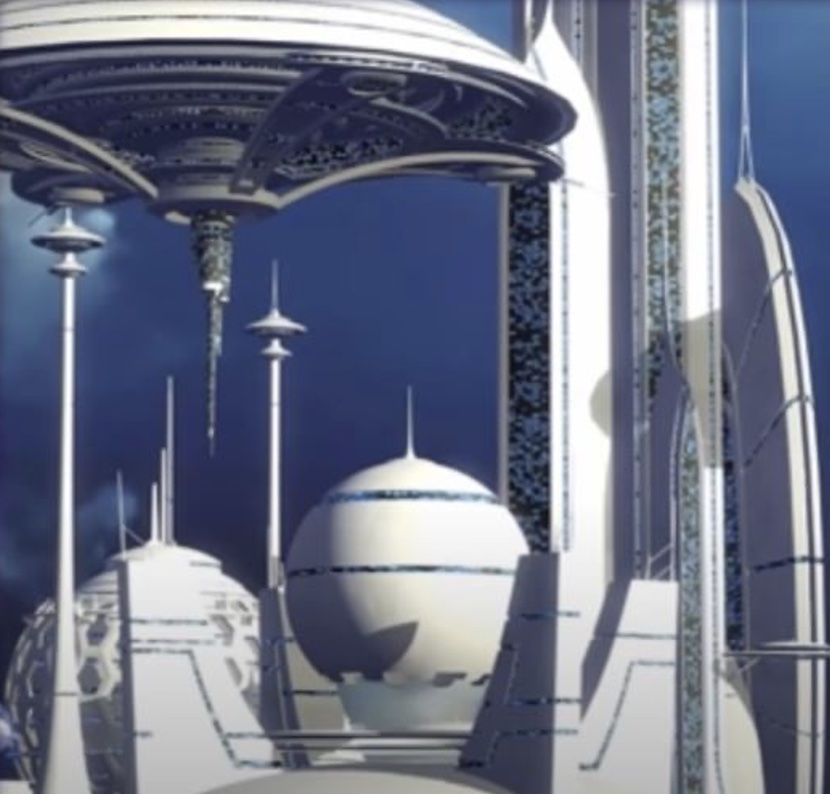
The image looks exaggerated, but it does look very similar. In Taygeta we don't usually build upwards, what for?
Going back to the Urmah, their houses on the outside are of two different kinds like round half ball type, like an igloo and. on the other hand, square rectangular boxes similar to many human houses.
What is constant between the two is that they are very large and spacious inside with many levels. In other words, it is not a tiny igloo, but half a huge ball on top of a climbing wall. As always, all exaggerated. It is safe to say that Urmah houses look like castles.
Square houses have structures similar to classical Greece with pillars around and inside. Houses with very large wooden double doors with metal typical of what you would associate with a medieval castle, being just a house. Inside there is a hall or center of the house with pillars again. Filled with decorations on the walls and on the pillars themselves. Surrounding that central hall are kitchen rooms, living rooms, libraries and dining rooms. At the back, opposite the door, there is a very wide staircase that goes up a slope and splits in two, one on the right and one on the left, similar to many old houses on Earth. Leading to an upper level where there are more bedrooms at the opposite point of the stairway, which would be one level above the door, there is another stairway equal to a third floor and so it goes up to the fourth floor as well.
They are very spacious houses inside with little agglomeration of objects. Easy to navigate. All in white or black marble. This is the example of the house I saw: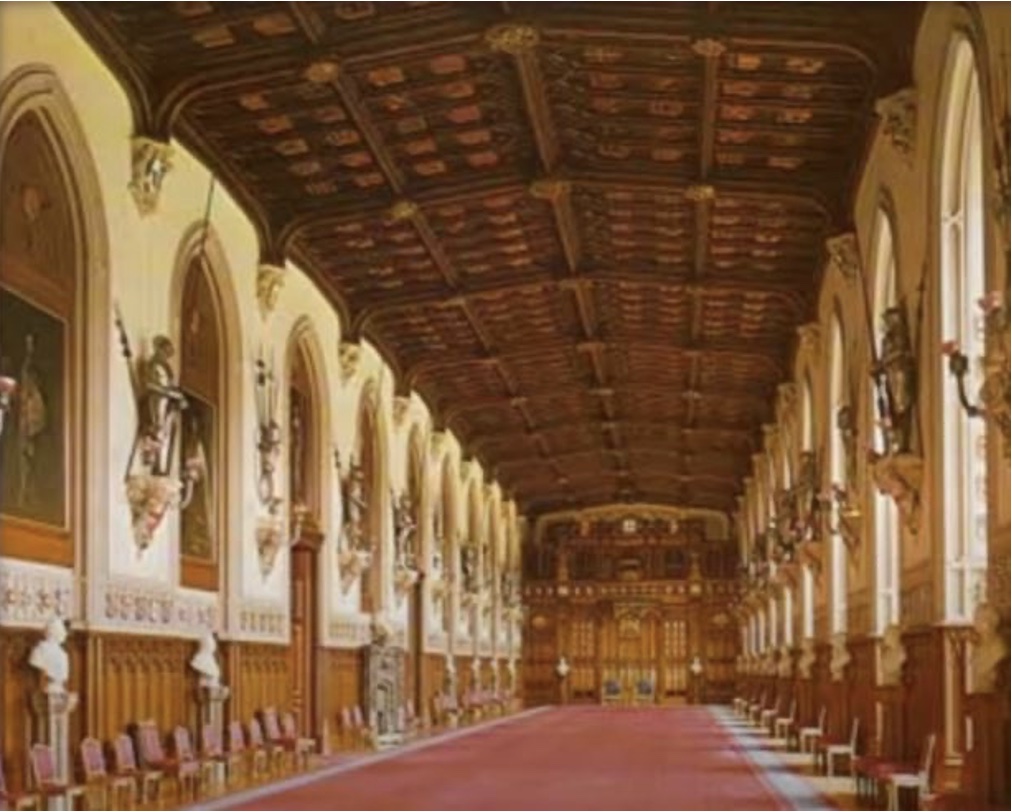
I know there are variations and many things may be different in other houses, but this is the one I know best. The Urmah like to fill their walls with art, paintings, sculptures. All with illumination. Even if it's all electric, they like to accentuate the idea of torches like in the old days. With internal pillars, as I was saying. Everything on a clearly larger superhuman scale. As a Lyrian, one feels out of place there. Even the doorknobs felt like they were in my face and I am tall. Impossible to reach for someone smaller than me, like Yazhi.
Regarding the decoration, they also make constant overuse of gold, but it's not paint, they are not interested in appearances, it's pure gold. I think you can imagine the atmosphere of an Urmah place or house. Everything is overwhelming there. Ancient and at the same time ultra-modern, technological.
Their bedrooms are very sealed. In spaces away from the rest of the house. I do remember their beds tend to be round, full of pillows and are huge even for them. Which I feel would be somewhat similar to having a cat sleeping on a bed of any of us. With Lyrian bodies. Maybe not as exaggerated in size, but it would be like a half Lyrian single bed for a cat. About that scale of difference and they are circular or half circle in shape. I haven't seen rectangular beds. They look nice, those beds. You can roll in there and you don't get out. The Urmah are cats, logically they spend a lot of time sleeping.
Regarding the bathrooms, I didn't find anything similar, but this image is the closest: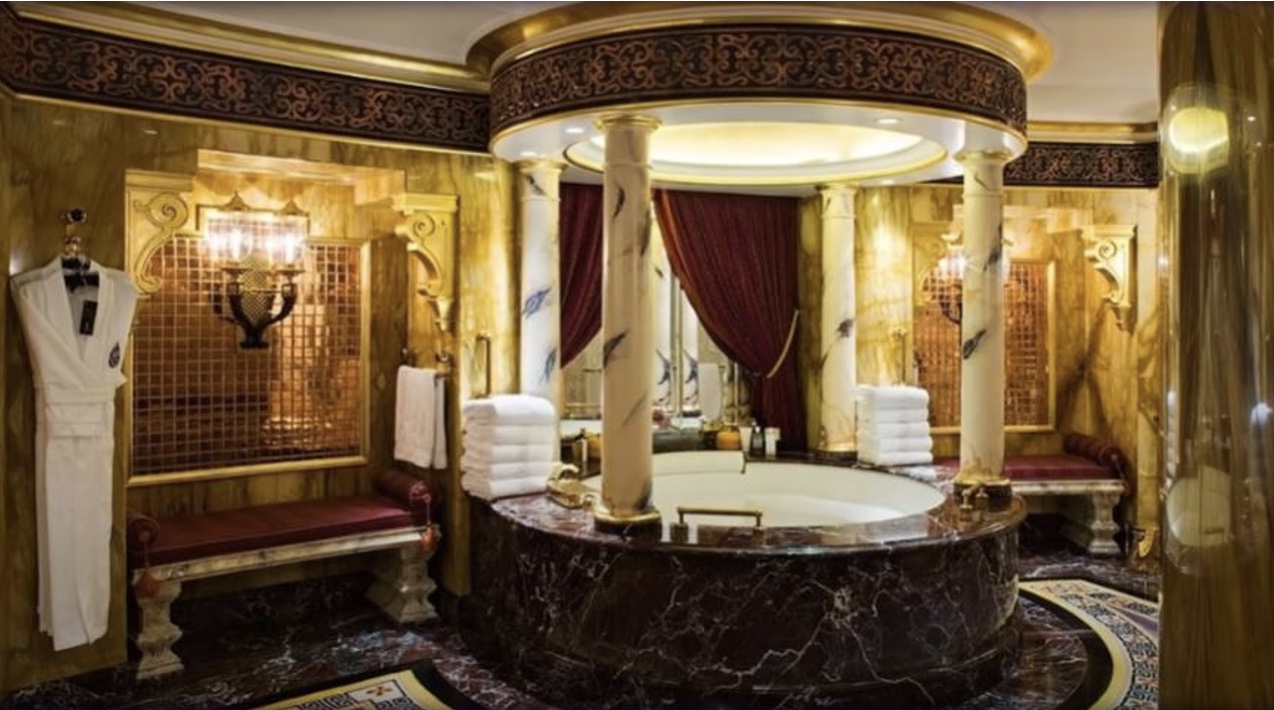
They have faucets and running water. They look like handles. Like this, but bigger and, as always, all super decorated. We rarely use faucets. It depends only on the construction of the house, but we are another culture. It is said that if you confine the water, it loses its energetic properties. That's why we keep it running.
The Urmah also have running water, but I was struck by the presence of faucets. Although it is logical because that tap shape is easy to move with a paw. But, as I said, they do have a lot of skill with those paws, it's just that what they do and use is designed for this kind of hand-paw. What we do, they view as too small and fragile for them.
Of course, they also use toilets like those on Earth. Basically the same and that's present in countless civilizations and races. But because of the fact that there is a tail, it is somewhat different, it is inclined. That is, the surface where the lid sits is tilted forward a little, but visible. And they don't have the water tank at the back like on Earth. It could be because of the tail because they leave space there where the tank would be. This is not so strange because, as you may know, many domestic cats use toilets.
About the sewage system, they do pass through treatment plants. They do not pollute. Although it is not the same system as on Earth. What is not to be used is vaporized, destroyed and then that energy is used for more electricity. Maximum efficiency. Just like us, we disintegrate everything. Only molecular water is left. I don't know exactly how it is with the Urmah, but it must be a similar system to ours. When it is better for it to go to a special center it does, and when a house is farther away, the waste is processed in the same place. That is to say that each house has its own processing plant.
In terms of transportation, they use Maglev trains and air transport as their main means of transportation. Almost everything is by air. Circular ships are the most common in almost all races followed by those that look like a little human van that flies, similar to the Star Trek shuttles. It's only because it's a very useful shape. Again, it is a constant in many races to use shuttles similar to that one. There aren't a lot of differences.
But all of their ships have a stripe or part that is brindle. The brindle being the Urmah symbol. It's funny because there is an annual aircraft gathering on Earth called Tiger Meet where various nations paint their military aircraft as tigers, and I wondered if it came out of the Urmah. With the Urmah, most commonly it is not the whole aircraft that is painted like that, but on the back it has a tabby stripe that indicates who owns it.
In Avyon the roads are not like on Earth, but they do exist. They are like what would be compared to country roads. And they are not or rarely go overland from city to city because air transportation is much more efficient for everyone.
Fun fact, they don't use bicycles as that seems to be a human invention. Even we loved that invention. We don't have or didn't have them, but oddly enough, scooters or motor scooters we do and also small wheeled variants that run on Tesla electric motors that take their power from overhead grids, not from wires or batteries. They have wheels, but their turning axles are magnetic, without friction. So are electric motors and they never run out of energy because they carry it with them.
CULTURE, ART AND LEISURE
The way the Urmah greet each other or ourselves with them is by speaking with a "hello", but, gesticulating, it's a hand up. That's very widespread.
As I explained before, they dress always very adorned with big golden armor and capes, but when they are comfortable, I really don't know how. To my eyes, they are always overdressed, although they don't always wear armor. But, from what I've seen, they wear baggy unpatterned clothes rather Spartan-like. Also light beige or white colored clothing with adjustments on the shoulder straps. Although it was only once, but I also saw them wearing robes, in purple with gold.
Another thing they use many times is something like a... I don't know how to say it, a skirt like the Roman troops would use, but with black tights underneath. They wear little pants underneath, accentuating their little short legs. They have an opening in their clothing for the tail, which also includes a portion or sleeve for the tail. It is not just a hole in the clothing. It comes with elastic or drawstrings that serve to tighten or adjust the sleeve of the clothing around the tail. How do they reach in the back? They are cats. Their spine is very elastic.
For the feet they wear boots, rounded at the front. Very similar to these, only black, like leather, and they also have soles.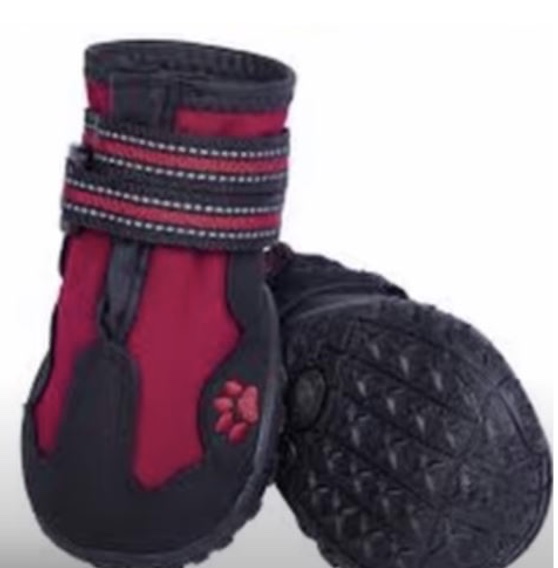
Although made of vegetable leather, I suppose. Since, even though they are carnivores, they don't kill, they make the meat.
They also wear shoes or open-toed shoes, but it is like seeing them barefoot in places where they are comfortable. The fashion looks kind of Roman.
They also hang things from their ears, males and females alike. I don't think they paint anything on their faces as most are already naturally striped.
I understand that they don't have the same morality in terms of having it frowned upon to be unclothed. They use clothing to accentuate their features, but it is unusual to find them naked. Only with their fur.
They wash with their tongue and since they do it all the time it seems to be well seen to do it in public, in their culture, and their saliva is different than ours. Throwing hairballs, I haven't seen them or know about that, but it could be that they do, and out of politeness they will go to the bathroom or something. Although that's more domestic cat behavior and not big cat behavior, but I know they bathe a lot with water too, daily.
Regarding breeding I know that female cats help each other. They pass the kittens to each other. I have seen the kittens in the arms of both and other members of the group as well who are not their parents. They carry their babies like we do. Not with their mouths like domestic cats. Sometimes they carry them in a backpack or just in their arms and even two or three if they are small, but they also use strollers, baby carriages. If they have eight kittens, how else? And we use them too.
As for feeding, they no longer hunt, they produce the meat. In my opinion, it's organized by distribution because, compared to the medical pods here, it's quite a bulky device and it requires the assistance of other secondary devices as well. And their food is basically cell or tissue cultivations in devices similar to medical pods.
But the Urmah are very dedicated to gastronomy. Lots of time, lots of recipe. Of course, all very spicy.
As for pets, they like to have more pet cats. Cats as we know them. The little one that is also very prolific, the house cat, being that they see them as their little starseeds.
Actually, initially, the housecat came out of there, from that planet, it is said. It is the planet cat of the galaxy. But I would say they control the birth rate or they would be flooded. We have to do that through hormone treatment and we already have feline problems on board.
As Nai'shara told me talking about it, the Urmah having common domestic cats as pets is as if we had little Taygetans or humans, little tiny humans, about 40cm, as pets.
As for their written language, it looks like cuneiform. In fact, in ancient times they used to write with their fingernails as fingernail impressions or punctures in manuscript. They are like sets of lines that are complex. A kind of cuneiform with Kanji. In groups each symbol is a complete word resembling Kanji.
URMAH LANGUAGE
Their numbers are also based on the same. Depending on the angle or direction of the line it is a number and it increases in complexity as that number grows. The lines are not uniform, they are clearly small wedges. They have a pointed part and a wide part. Depending on where it points, it is the number, rotating like clock hands. And they are adding hands when the value goes up. And then there are sectors marked with other lines that mark the tens, hundreds, thousands and more. If you observe, this form of writing is very cat-like.
These images are of terrestrial cuneiform. This last image is very good.
That's what I was telling you, long lines of different angles, clearly with a point and a thick part. You have to understand that what they used to write with were their own nails and from there they evolved. Although they still use them for manuscript sometimes. That last image looks like Urmah. That's how the writing is, long and pointed and at angles.
I do not know if the cuneiform language you have on Earth is because of Urmah influence in the past, it is possible. But it is also a logical way of writing on clay tablets. The Urmah have been present on Earth for thousands of years, especially in Egypt and Sumer and more recently in Roman and especially Greek culture. It would not be surprising if they had an influence on writing.
Today, virtually all their writing is on computers, but they don't have keyboards like ours, they are just little things with over scaled buttons and also on high-tech surfaces of the touch-sensitive type with hologram or thought. So, they don't type because their anatomy doesn't allow them to, but they have other kinds of keyboards or digital interfaces designed for cats. Generally, in the case of not being interactive touch holograms, they are physical buttons that look like a half sphere like a ping pong ball suitable for their little paw pads and they do have a lot of precision in those fingers.
URMAH MUSIC AND ART
Regarding their music, it is mainly based on drums and brass. That is, trumpets and the like. Also, the use of flutes and instruments similar to an Australian one which is a long bamboo stick with stones inside and it sounds like water. These instruments are very similar to the Urmah and that kind of bends are typical in Urmah brass instruments.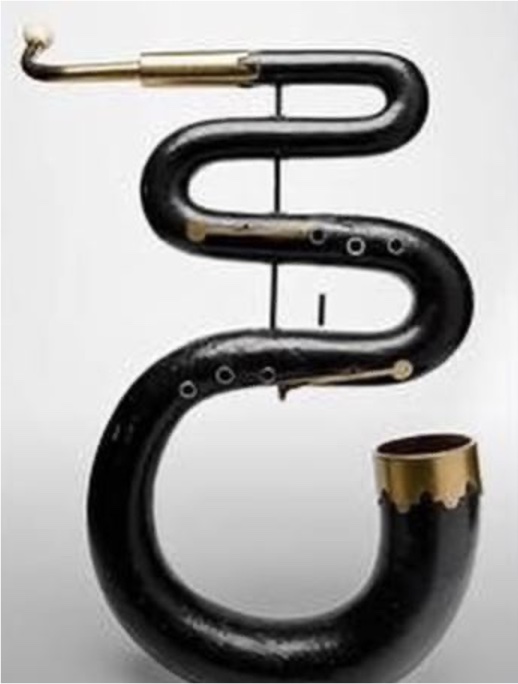
The piece "Ride of the Valkyries" by Richard Wagner is always said to be very Urmah. That's how their music is. Magnificent and exaggerated marches. They also sing and dance a lot. They are very festive. All the time celebrating something with the slightest excuse.
In addition, they like art very much, they are very artistic. That characterizes them a lot because one thing that is for sure is that they are exaggerated, hyperbolic, epic in everything. Everything must be grandiose, majestic and over-adorned, immense, mighty. Everything must glitter like gold. Everything is to attract attention. Everything is to stand out above the rest, like good cats that they are.
In painting prevail painted scenes of great battles of their past. With realistic style. Painted with brushes. Only that everything is mega. Everything very big. I have never seen Urmah art up close, only in computer data.
They also have a lot of sculpture. The pillars are usually big cats holding up the roof, for example. If there is a hyper proud race, it is the Urmah. They are all extremely aesthetic felines and the Urmah exploit that masterfully.
URMAH LEISURE
In terms of entertainment, for example, they have theater and cinema as well, but not as a specific place but transmitted through the network such as the internet to homes. But in itself, entertainment is different because it is more focused on learning. So, sitting down to watch a movie as the terrestrial concept is seldom used in favor of playful immersions. That is, it is more interesting for the population to go and experience a direct immersion for entertainment for about two hours, or the time they themselves want and mark, than just sitting and watching what others want them to see.
But within the immersions, there are parts that are made by third parties and are used as experiences that several people can have. That is, they are always pre-made with personal variations. In addition to the immersions that are designed by the user himself.
So, if someone wants to experience the pre-made experience of, let's say, the last battle for Tiamat in 2500 BC, you can use that immersion program and you go in there with your own created avatar and you are there living that experience for as long as you like, learning what the event was like as well.
So, the entertainment in Taygeta and in many other places is kind of inclined to be a learning experience as well. Besides that, there are different levels within the immersions. From the light ones, where you know you are in one just to have a good time with a pre-made or self-designed experience, shared with friends, partners or family, or forgetting you are in the immersion for the duration of the experience. You control what you want to experience and why.
So, with that option to experience your favorite movie, knowing it's just a movie or not, there is no comparison to a terrestrial movie on screen. However, we here have learned to watch and enjoy terrestrial movies as you do. Also, with a purpose to learn from it about humans and their civilization. It has been a very useful tool for us to learn about life on Earth by watching series and movies. Also, it is there where we learn and perfect our human language, local idioms and speech accents.
But other than that, the Urmah are basically simple in their tastes. Aside from the immersions explained above, they very much enjoy just being with their family in peace. Very cat-like sleeping in the sun. They are independent. They like their space and their personal territory. They take advantage of any moment to take a nap. They spend more time asleep than awake. Just like the Alpha Draco.
But they also do fighting sports both in immersions and live. One example is that they pass each other a kind of stuffed animal that is a log wrapped with furry cloth and they try to take it away from the other and keep it in possession as long as possible until they get it to a target that is like a delimited area within the playing field. That's where you see them running on all fours using their whole body. Truth be told, they can be a bit brutal, those heavy cat games, and I've seen them get hurt playing. Unsurprisingly, it results in a lot of broken teeth and bleeding nails, but they fix that with medical pods. I am very struck by the fact that it looks a bit like American football.
Taygeta, on the other hand, in terms of sports, is very lean or boring. More towards Greek athletics with cultural influence there clearly.
Regarding services, they have bars, although not equal to those on Earth as there is no alcohol because everyone knows of its adverse effects and discard it. They are similar to those of Taygeta where it is like a so-called lounge where you go to hang out with friends. It is not a place like a bar or an Earth pub that revolves all around alcoholic beverages, but rather around the ambience. And, of course, drinking is also important, but they also offer food and a place to stay if you are coming from out of town.
RELATIONS WITH OTHER RACES
Another idea is to go on vacation or visit other places. It is common that different Urmah races, for example those of Avyon or Merope, visit each other or other planets inhabited by Urmah. It is one more reason for so much ship traffic continuously, and it is the same as how Engan, Solatians and Taygeta visit each other a lot as well. Or Aldebaran itself, which is arguably a tourist destination. Everybody wants to go and see that place. Especially those from Erra because it's so different from the big coniferous forests that cover the planet which is usually cold, too.
The Urmah do not usually get along very well with insectoid races or Reptiles. Nor do they get along well with those of Andromedan origin, the Arcturians or the Celaeno. I think it's because of the unemotional nature of all these races, because if you look at them as a whole, that's what they have in common, generalizing. And the Urmah, if there is anything that defines them, it's that they are very emotional and even dramatic.
Again, that's why they get along well with us, with others always accusing us of being emotional and dramatic as well. I might add that Taygeta itself has not historically gotten along very well with those kinds of races either. All positive, anyway.
As a curiosity about Urmahs, they come in every color and coat pattern imaginable. Just like house cats. That is to say, they are not homogeneous in that aspect. All cat coat designs are found by families in Urmah and, as with cats, you never know what colors the kittens will have or very limited. Although they do mix. It happens as on Earth, that members of a breed, if crossed with the same ones, will very possibly produce more of the same ones. Lions like lions, tigers like tigers. But, since they don't consider that to be important, they crossbreed with each other, resulting in a population that is very diverse in color and pattern.
DOMINANT RACE IN THIS GALAXY
With all this, I consider the Urmah a perfect mix between the ancient, the retro, with very old customs that are reflected in their art and architecture, such as their love for torches and, at the same time, progressive and very advanced in everything that is cutting-edge technology. They combine very well the traditional and the ancient with the new and technological.
Their multiple colonies throughout the galaxy accumulated over time, their need to protect them militarily, and the fact that they are very prolific as a species, combined with their physical and mental strength, inherent in felines, have made them the most dominant race in this galaxy. They are present everywhere. Their cultural and military influence is present in virtually all civilizations, especially in this quadrant in which we live. They are simply a magnificent species in every aspect.
This transcript is available for download
file_downloadDownload as PDF file_downloadDownload as TEXTCommunity provided translations
This transcript does not have any community provided translations yet
